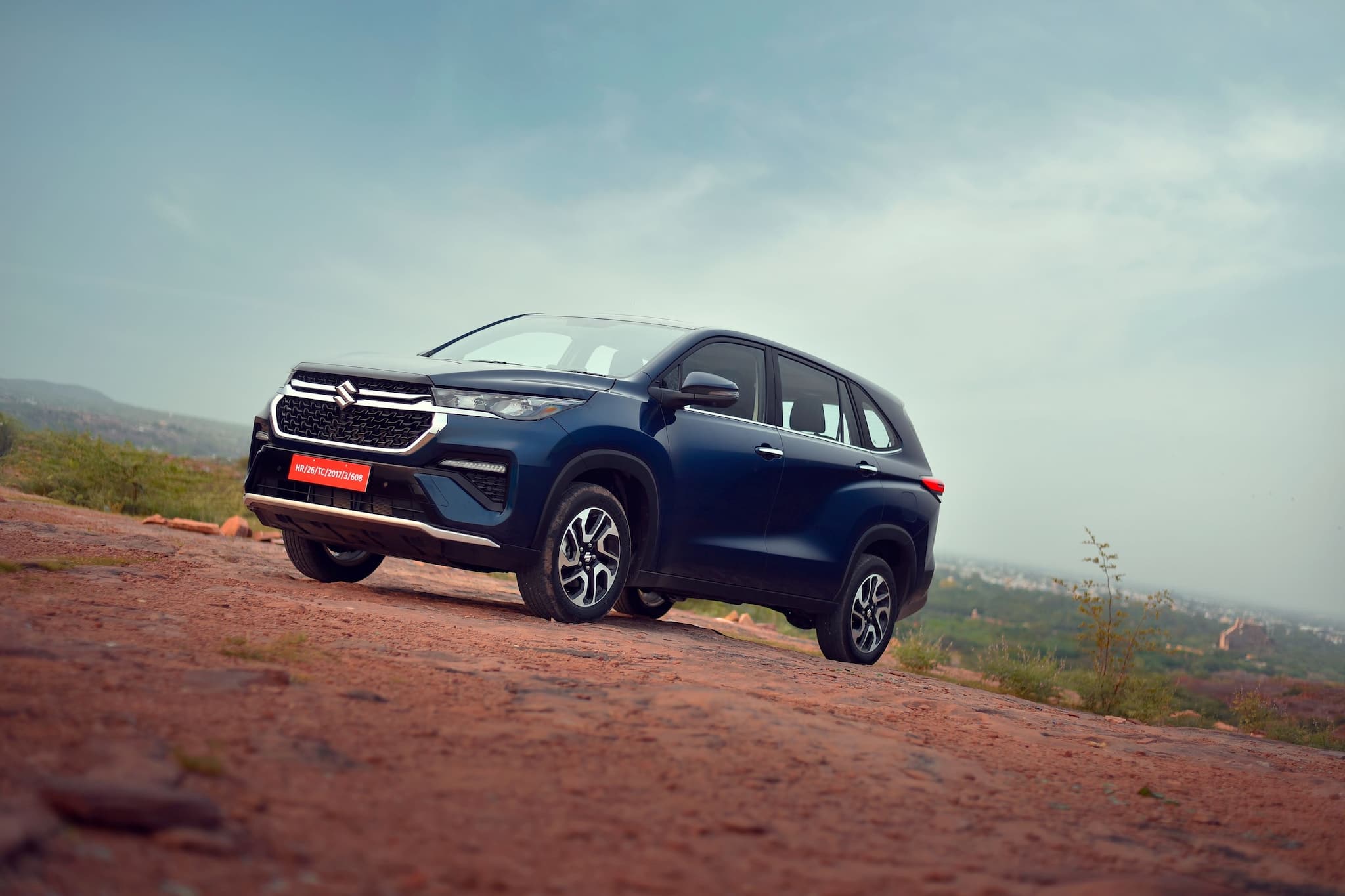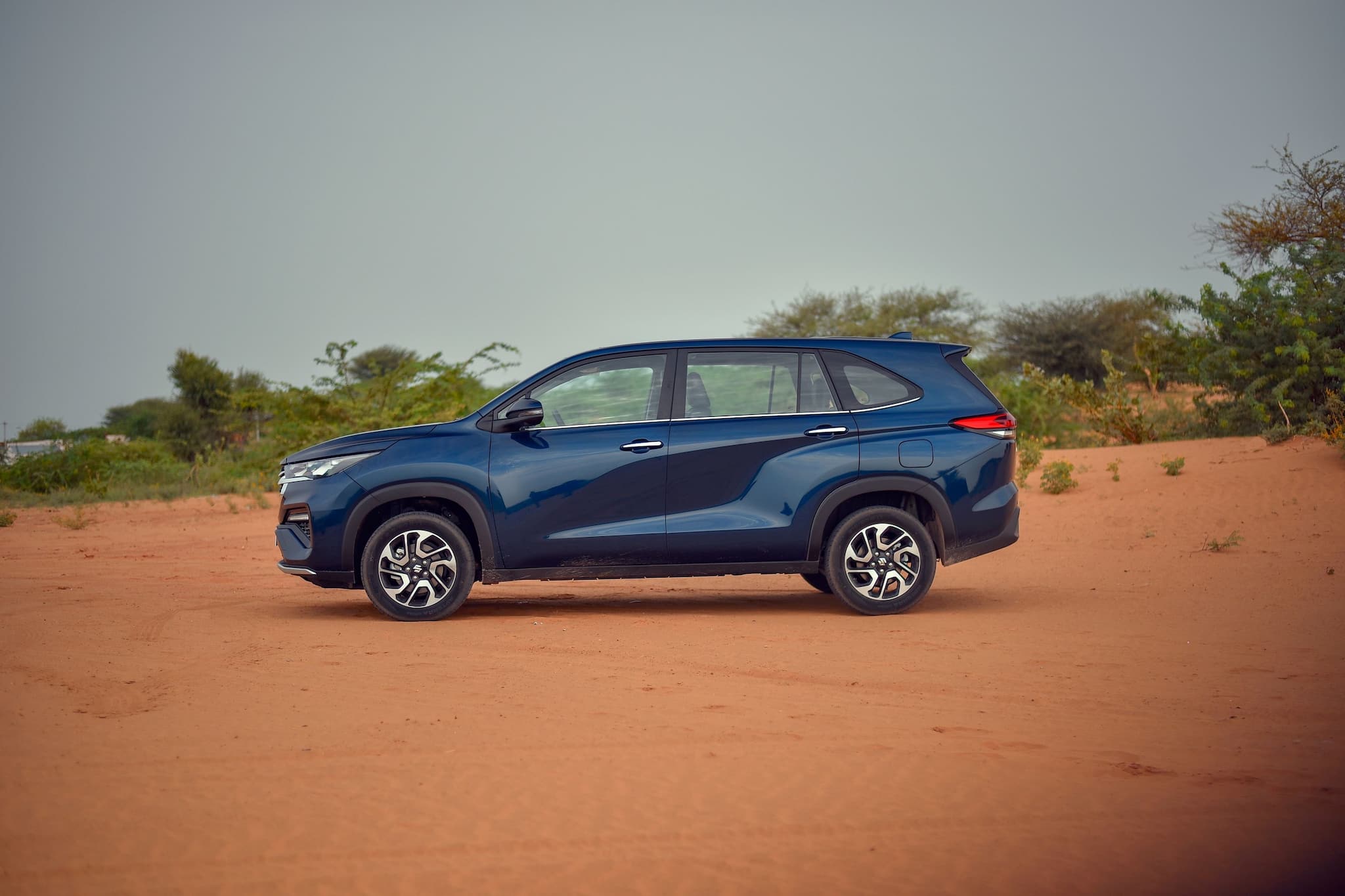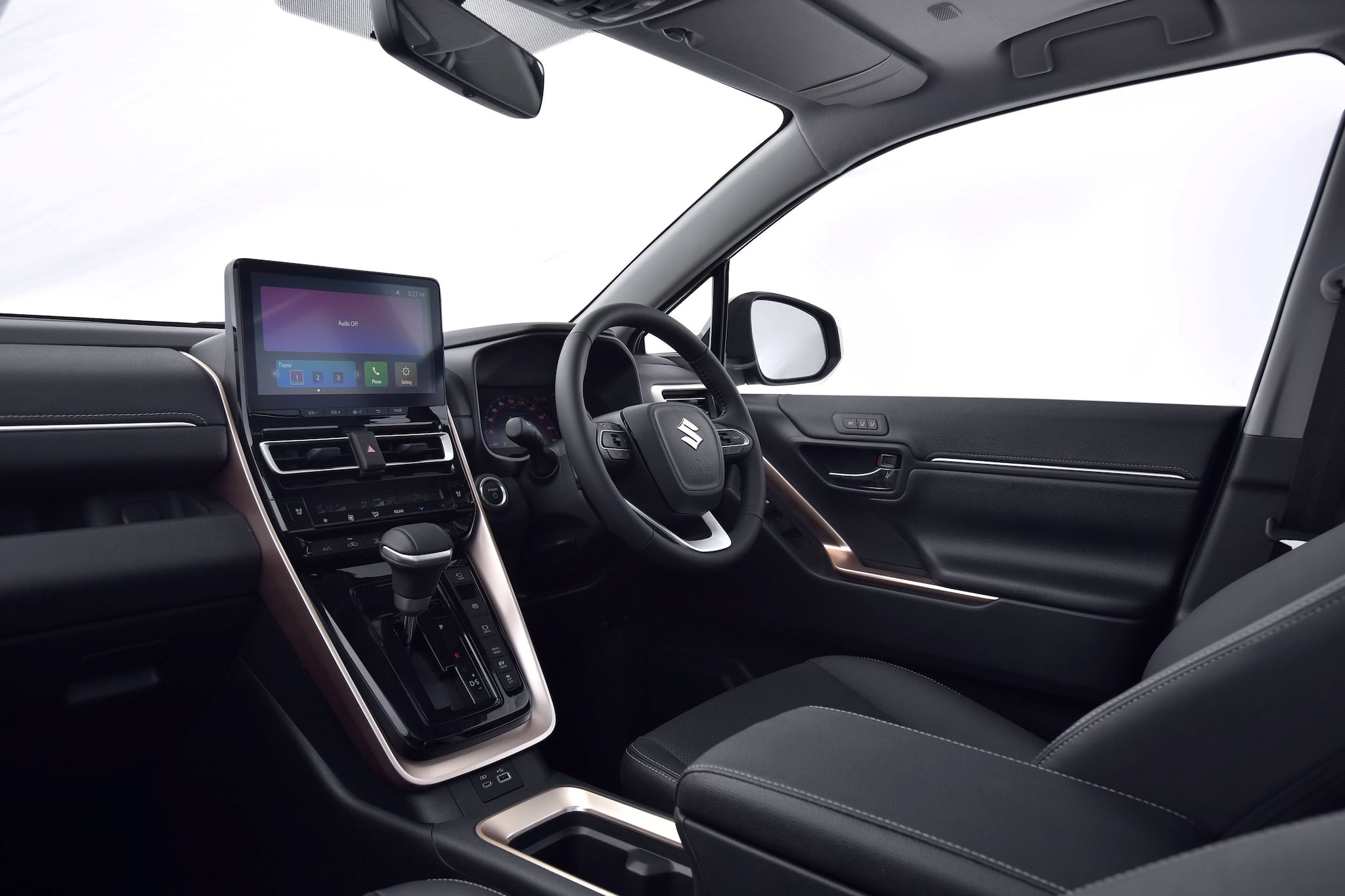



Maruti Suzuki recently grabbed headlines by launching its most expensive car in India. With prices starting at Rs 24.79 lakh (ex-showroom) the Invicto propels the country’s largest carmaker into uncharted territory, that of the premium MPV or multi-purpose vehicle. The vehicle is, for all intents and purposes, a badge-engineered twin of the highly coveted Toyota Innova Hycross. Much like the preceding line of vehicles including the Suzuki Grand Vitara and the Glanza, which emerged from the Suzuki-Toyota partnership, the Invicto offers no technological advantage over its identical twin. It comes with a petrol-hybrid powertrain only and, save for a few bells and whistles, offers the same performance as the Innova Hycross. Which begs the question: why did Maruti Suzuki decide to enter terrain it has previously been unable to thrive in, especially when the alternative wears a badge with greater aspirational value?
This isn’t the first time Maruti Suzuki has launched a premium product in the market. Back in 2011, the brand introduced a premium sedan called the Kizashi. With its sensational design and robust powertrain, the sedan was brought in to take on the likes of the Honda Civic but was discontinued in 2014, primarily because no one wished to pay big bucks for what was a mass market brand.

Maruti Suzuki’s senior executive director of sales and marketing, Shashank Srivastava, begs to differ. “The Kizashi was brought in as a CBU (completely built-up unit, which attracts a higher import tax slab), and so was priced higher than its direct rivals. It wasn’t the product but the fact that it was imported that didn’t work.”
The Invicto, building on an already established name, received more than 6,000 orders even before it was launched. On the day of the launch, Maruti Suzuki’s share price hit a record high of Rs 10,036.70.
For starters, the Toyota Innova Hycross hybrid commands a waiting period as long as 26 months. Despite the MPV sitting above the sales phenomenon that is the Innova Crysta, Toyota cannot make enough of them fast enough. And yet, as per the terms of agreement with Maruti Suzuki, it must set aside a certain percentage of Hycross models for its partner, thereby allowing Maruti Suzuki customers to get their hands on an Invicto quicker than they would in the case of the Hycross. Advantage Maruti Suzuki.
It’s evident that Maruti Suzuki has been the primary beneficiary of this partnership. The brand, for its part, gets to bolster its relatively young SUV portfolio with a formidable premium MPV clearly marking out the luxury end of the spectrum. Counting the Brezza, Maruti Suzuki now has four different SUVs in its portfolio, each operating in a different price bracket. In return, Maruti Suzuki, which produces 1.3 million units every year, is using its sway with policymakers to help Toyota acquire higher semiconductor allotments. Toyota, however, has reserved the top-end trim of the Hycross hybrid for itself, with the ottoman-equipped seats not finding their way to the Invicto. And Maruti Suzuki, in order to further differentiate the Invicto from the Innova Hycross, has limited sales to private owners only and not fleet cab operators.
The Invicto
At Rs 24.79 lakh, the base Zeta+ version of the Invicto is cheaper than the base Hycross by approximately Rs 24,000. As a result it does miss out on a few features including a 360-degree camera, parking sensors and automatic folding rear-view mirrors, among others. What it gains, however, are four additional airbags. The Invicto also gets smaller 17-inch wheels, instead of the Hycross’ 18-inch alloys, an attribute that helps give it a marginally improved ride quality while, on the flip side, looking a tad ungainly on such a large vehicle.

Of course, there are some visual changes. As with other Suzuki-badged Toyotas and vice-versa, the look of the grille, bumper and tail lamp clusters has been reworked, with two vertical chrome bars running across the Invicto’s hexagonal grille. The tail lamps have also been redesigned and, truth be told, the Invicto does seem to be the better looking vehicle with cleaner lines defining its front and rear. The powertrain, of course, remains the same, with a 2.0-litre, four-cylinder, turbo-petrol paired to an eCVT along with an electric motor giving it a combined power output of 184 bhp. This beast of a seven-seater doesn’t quite surge nor lumber ahead. Power has been calibrated with fuel efficiency in mind, and the Invicto claims a figure of 23.24 kilometres per litre, a figure that’s identical to the hybrid Hycross.
The interiors, as expected, are also near-identical with the only marked difference lying in the dashboard trim. The Invicto ditches the dual-tone dash treatment, instead opting for an all-black leather dash with copper-coloured accents bordering the AC vents, door handles and centre console. The top-end version, which is nearly Rs 1 lakh cheaper than its direct counterpart in the Hycross range, misses out on crucial ADAS features, something Maruti Suzuki’s research suggested wasn't crucial to purchasing decisions.

In terms of handling and powertrain, there is little to set it apart from the Hycross. Even the suspension damping remains the same, resulting in a barely discernible difference in ride quality, save for the advantage provided by the smaller wheels. Despite the driving modes, the Invicto is a big moose of an MPV. It wafts over pretty much any surface, offering magic carpet-like ride quality and acres of space. Yes, the eCVT does not like to be rushed, like most eCVTs, and the driving modes do nothing to change that. The paddle shifters do offer some respite, but the transmission unit prefers gentler throttle inputs. What’s truly remarkable is how you don’t get to feel the Invicto’s size. The steering is incredibly light, offering little in terms of feedback, but manoeuvring the Invicto requires no effort on the driver’s part.
VERDICT
For Maruti Suzuki, the Invicto is about establishing a toehold in the premium MPV space and, more importantly, increasing its market share in the SUV category. According to Srivastava, the brand’s SUV market share was 12.1 percent last year, while its market share in the non-SUV space is over 65 percent. And the Invicto’s timely arrival, when Innova Hycross customers face long waits for delivery means that for customers, it’s a roundabout way of purchasing what is effectively an Innova. Without the waiting period, most customers would prefer the badge value of a sub-Rs 30 lakh Toyota over a sub-Rs 30 lakh Maruti Suzuki. But given that Maruti has gotten Toyota to set aside a chunk of its most premium MPV for Maruti Suzuki’s own customers, customers will buy whatever they can get their hands on first.
Discover the latest Business News, Sensex, and Nifty updates. Obtain Personal Finance insights, tax queries, and expert opinions on Moneycontrol or download the Moneycontrol App to stay updated!
Find the best of Al News in one place, specially curated for you every weekend.
Stay on top of the latest tech trends and biggest startup news.